-
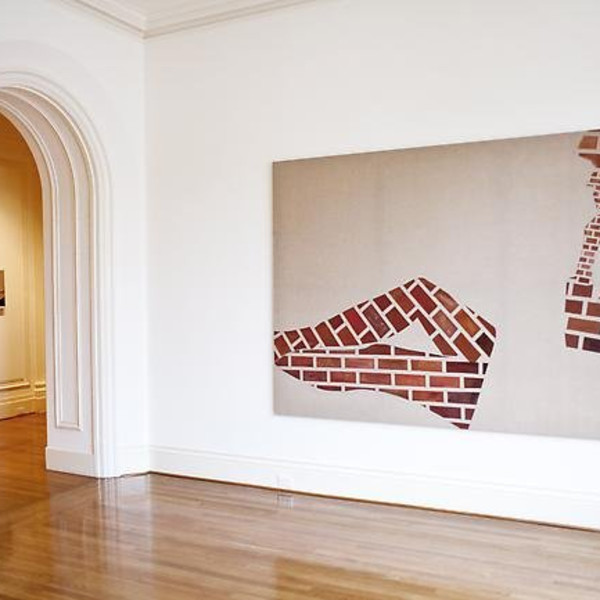
Caragh Thuring: New Works, Anthony Meier Fine Arts, San Francisco
Anthony Meier Fine Arts is pleased to present an exhibition of new paintings by Caragh Thuring. In her inaugural exhibition at the gallery, Thuring exhibits a body of work that ties together ideas and motifs previously referenced in her work.
Thuring invites a sense of wonder, presenting several compositions rife with incongruities of scale and dimension. Meanwhile, other paintings present tangible objects – a window balcony, an ornately fastened rope – whose properties are fully bound in realism and physics.
Drawing from her own experience, Thuring takes inspiration from a range of source material, including her own photographs, books, travels, memories, and her knowledge of art history. Galarus and San Petronio, for example, depict the marquetry of a choir stall in Bologna, while Pool Palmrecollects surfacing from a swimming pool to encounter a looming palm tree. In both cases the general scale is shifted and obscured in an otherwise realistic presentation.
Characteristic in her use of unprimed linen, Thuring’s paintings feature figures and elements amidst an open background; layered paint and unpopulated linen create a depth of field that leaves much to the imagination. A figure constructed of bricks lounges in the corner of one canvas, while outlined half-figures direct another scene.
Tying these together are several themes repeated throughout: pyramids, window panes, brick constructions – each presented in an imaginative arrangement.
Caragh Thuring was born in Brussels in 1972. She lives and works in London. Her work is included in many public and private collections, among them the Tate, the Zabludowicz Collection, and the Saatchi Collection.
-
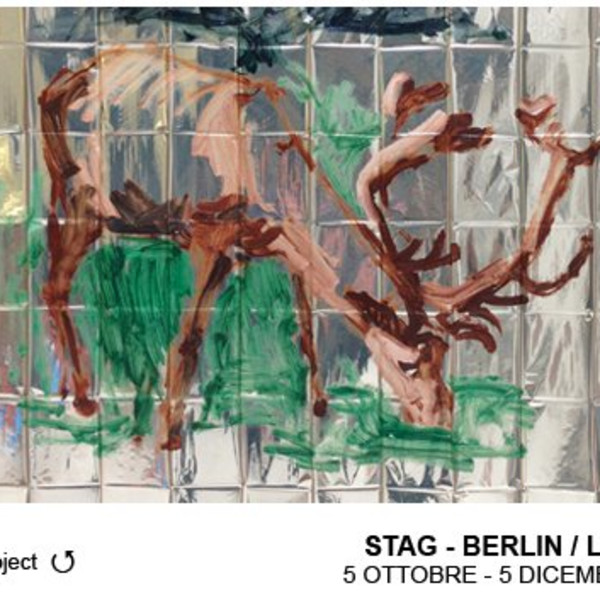
Caragh Thuring: STAG BERLIN / LONDON, Dispari & Dispari Project, Reggio Emilia, Italy
-

Lynda Benglis: Inaugural Great Hall Exhibition, NYU, The Institute of Fine Arts, New York
The Institute of Fine Arts is pleased to announce the September 2013 debut of The Great Hall Exhibitions, an exciting new initiative that will present two exhibitions per year showcasing prominent contemporary artists. Taking place in the fall and spring semesters, the expansive great hall of the Duke House, a historic landmark building, provides an impressive setting for displaying seminal contemporary art in the center of the IFA’s academic home and community.
The IFA’s inaugural Great Hall Exhibition will feature the work of American sculptor Lynda Benglis.
One of the foundational figures in twentieth-century feminist art, Lynda Benglis has been creating works that explore the ways in which the body, in both its physical and cultural extensions and constraints, interacts with the world around it. Benglis first received international attention in the late 1960s for a series of works in which she poured brightly colored bands of liquid polyurethane foam and pigmented latex directly on the gallery floor. With their unconventional palette and materials and their ambiguous identity between painting and sculpture, these works initiated Benglis’s career-long project of questioning and expanding the boundaries of artistic media, materials, and form. Her works’ radical aesthetic innovation coupled with their overt critique of dominant modes of artistic practice—from modernist painting to minimalist sculpture—suggest alternative ways of seeing and being unburdened from the repressive verities and traditions of the past. This motivating dichotomy of Benglis’s art is perhaps most evident in her consistent engagement with the ostensibly antagonistic processes of creative amalgamation and material degradation, figured through the works’ invocation of melting, dripping, and deformation. This ruin-like aspect of many of Benglis’s works reveals currents of classicism and romanticism running through her oeuvre, albeit deeply informed by feminist critiques of historical continuity and expressive individualism. As such the Institute of Fine Arts provides an ideal intellectual and architectural milieu in which to examine the complex interplay between innovation and tradition that motivates a great deal of Benglis’s art. On view at the IFA will be four artworks, two of which are seminal “pours” from the late 1960s.This inaugural Great Hall Exhibition is organized by Professor Robert Slifkin and PhD candidate Jeffrey Uslip.
-
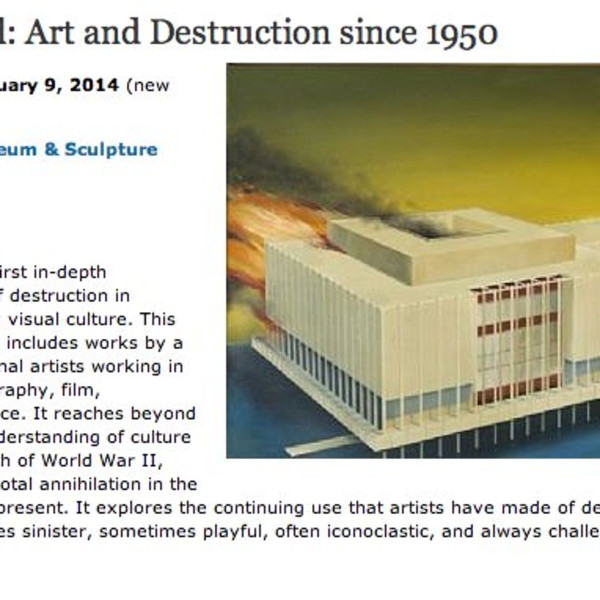
Michael Landy and Walead Beshty: Damage Control: Art and Destruction Since 1950, Hirshhorn Museum and Sculpture Garden, Washington
Art and Destruction is the first in-depth exploration of the theme of destruction in international contemporary visual culture. This ground-breaking exhibition includes works by a diverse range of international artists working in painting, sculpture, photography, film, installation, and performance. It reaches beyond art to enable a broader understanding of culture and society in the aftermath of World War II, under the looming fear of total annihilation in the atomic age, and up to the present. It explores the continuing use that artists have made of destruction as part of the creative process, sometimes sinister, sometimes playful, often iconoclastic, and always challenging.
-

Michael Landy: Art under Attack: Histories of British Iconoclasm, Tate Britain
Art under Attack: Histories of British Iconoclasm is the first exhibition exploring the history of physical attacks on art in Britain from the 16th century to the present day. Iconoclasm describes the deliberate destruction of icons, symbols or monuments for religious, political or aesthetic motives. The exhibition examines the movements and causes which have led to assaults on art through objects, paintings, sculpture and archival material.
Highlights include Thomas Johnson’s Interior of Canterbury Cathedral 1657– the only painting documenting Puritan iconoclasm in England – exhibited for the first time alongside stained glass removed from the windows of the cathedral. Allen Jones’s Chair 1969 is on display, as well as evidence of statues destroyed in Ireland during the 20th century. The show consides artists such as Gustav Metzger, Yoko Ono and Jake and Dinos Chapman, who have used destruction as a creative force.
Religious iconoclasm of the 16th and 17th centuries is explored with statues of Christ decapitated during the Dissolution, smashed stained glass from Rievaulx Abbey, fragments of the great rood screen at Winchester Cathedral and a book of hours from British Library, defaced by state-sanctioned religious reformers. These works are accompanied by vivid accounts of the destructive actions of Puritan iconoclasts.
Examples of attacks on symbols of authority during periods of political change include a portrait of Oliver Cromwell hung upside down by the staunch monarchist Prince Frederick Duleep Singh (1868–1926). It also shows fragments from statues of William III and Nelson’s Pillar destroyed by blasts during political struggles in Dublin in 1929 and 1966 respectively.
Suffragettes’ targeted attacks on cultural heritage are illustrated with works byEdward Burne-Jones’s Sibylla Delphica 1898, attacked in 1913 in Manchester, the birthplace of Emmeline Pankhurst, as well as John Singer Sargent’s Henry James 1913, slashed at the Royal Academy in 1914. These are accompanied by archival descriptions of the actions carried out and police surveillance photography of the militant Suffragette protagonists.
Assaults on art stimulated by moral or aesthetic outrage include those on Carl Andre’s Equivalent III 1966, and Allen Jones’s Chair 1969, damaged on International Women’s Day in the 1980s. The show reveals how for some modern artists destruction has been utilised as a creative force. The piano and chair destroyed by Ralph Ortiz during the 1966 Destruction in Art Symposiusm is on public display for the first time, alongside audio recordings of this action and works by Gustav Metzger, John Latham and Yoko Ono. Portraits from Jake and Dinos Chapman’s One Day You Will No Longer Be Loved series, Mark Wallinger’s Via Dolorosa 2002 and Douglas Gordon’s Self-portrait of you and me 2008 are also be included.
-
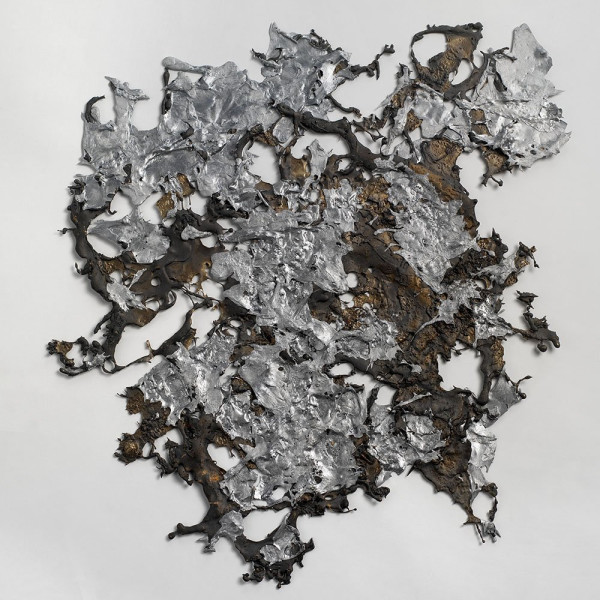
Michel François: Une Exposition Universelle (section documentaire), Biennale de Louvain-la-Neuve and Musee de Louvain-la-Neuve, Belgium
J'ai observé toutes les oeuvres qui s’accomplissent sous le soleil ; et voici, tout est vanité et poursuite du vent. (L’Ecclésiaste)
Dans le puits central du Musée de Louvain-la-Neuve, une installation associera entre six et dix groupes de « vanités ». Ces groupes sont issus des réserves du musée ainsi que des collections scientifiques de l’UCL. Constitués d’artefacts ou objets pédagogiques, ces objets sont présentés au public avec leur dispositif de protection ou de stockage de manière identique (ou similaire) à leur mode de stockage en réserve. Il ne s’agit pas de déplacer une réserve entière, ou de reproduire exactement leur mode de stockage. Pour des raisons pratiques et artistiques, certains groupes nécessiteront des adaptations.
Avec ce projet, le désir des commissaires de la Biennale est de rendre visible la trace des gestes protecteurs de la pensée patrimoniale. Il s’agit d’en révéler la poésie invisible, en évoquant par là même les représentations de vanités ainsi que la poétique de la ruine dans l’histoire de l’art, de la peinture flamande du 16e, au style architectural des années 1980, en passant par les romantiques. Montrer ces artefacts avec leur habitat de conservation, c’est comme mettre en lumière leur état de double mort. Vanité du savoir, de la prospérité, de la connaissance universelle, ces "memento mori" proposent une expérience contemplative et intellectuelle riche pour le public.
Dans le parcours de la Biennale, le Musée de Louvain-la-Neuve proposera une exposition temporaire didactique qui présentera quelques méthodes d’analyses scientifiques appliquées aux oeuvres d’art et livrera au public certaines interrogations qui guident les actions des chercheurs au musée. Tout le long du parcours, des exemples concrets permettront aux visiteurs de comprendre le but des examens et ainsi de pénétrer de plus en plus profondément dans les secrets des oeuvres d’art.
Le chercheur pose en effet un regard sur l’oeuvre et l’analyse. Il cherche à savoir, à comprendre, à voir au-delà de l’image et à voir dans l’au-delà de l’Image. Il invente des méthodes pour voir à travers l’oeuvre. Il développe des systèmes rigoureux d’observation des objets pour interpréter les composants, pour tenter d’arrêter les affres du temps, pour connaître l’oeuvre dans toute sa profondeur. Il rend son savoir concret et perceptible en produisant de la documentation.
Les oeuvres sont éphémères mais le musée a le souci de les rendre éternelles pour les sauver et les transmettre aux générations futures. Dans la connaissance, il y a pourtant quelque chose qui s’apparente à la mort. Le savoir fige les choses dans un concept, les conçoit comme non-être, les immobilise…
Comment des documents, fruits d’observation et d’analyses scientifiques modifient notre perception, notre compréhension et notre appréhension de l’oeuvre ? L’essence de l’oeuvre est-elle dans le regard que nous lui portons ? L’analyse scientifique de l’oeuvre d’art crée-t-elle une nouvelle esthétique ?
Certes, le temps passe, le chercheur sait qu’il ne peut l’arrêter et que chaque oeuvre a sa part de mystère. Comment, par le développement de méthodes de plus en plus précises, le chercheur réussit peu à peu à percer l’essence même de la matière ? -
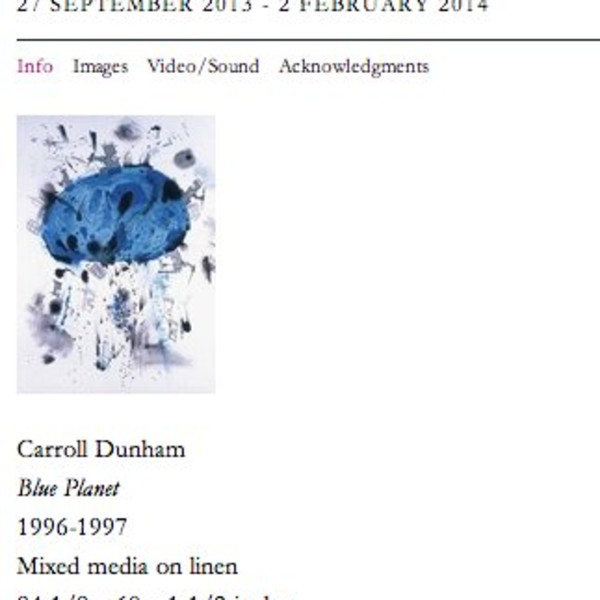
Walead Beshty and Arturo Herrera: Comic Future at Ballroom Marfa, Texas
Comic Future features work by artists who employ the language of various and discordant approaches such as abstraction and figuration to twist representation of their immediate environment thereby imbricating a skewed, often apocalyptic vision of the future.
Showcasing works from the 1960s through 2013, the exhibition surveys political satire and cultural commentary through art movements ranging from capitalist realism to contemporary pop art. The works include early drawings by Sigmar Polke, collage by Walead Beshty, painting by Carroll Dunham and Peter Saul, alongside newer works by Dana Schutz, Sue Williams, Michael Williams and Erik Parker and sculpture by Aaron Curry, Liz Craft and Mike Kelley. A Ballroom-commissioned site-specific wall installation by Arturo Herrera will complete the show.
Drawing from the art-historical lineage of cubism, cartoons, figurative painting and gestural abstraction, and appropriating subjects from mythology, advertising, print culture and consumerism,Comic Future is as much about the breakdown of the human condition as it is about the absurdities which define the perils of human evolution. The exhibition will be on view September 27, 2013 through February 2, 2014.
To inaugurate Comic Future, Ballroom Marfa will host a weekend of festivities, including an opening on September 27 from 6 to 8pm. The reception also features a performance by Devin Gary & Ross, a visually inclined trio of musicians, also featuring New York avant garde rock legend Kramer. Directly following the opening reception is a community dinner at 8pm under the Shade Structure. There will be an exhibition walk-through with the artists on Saturday, September 28, at 11am.
All events are free and open to the public.
-
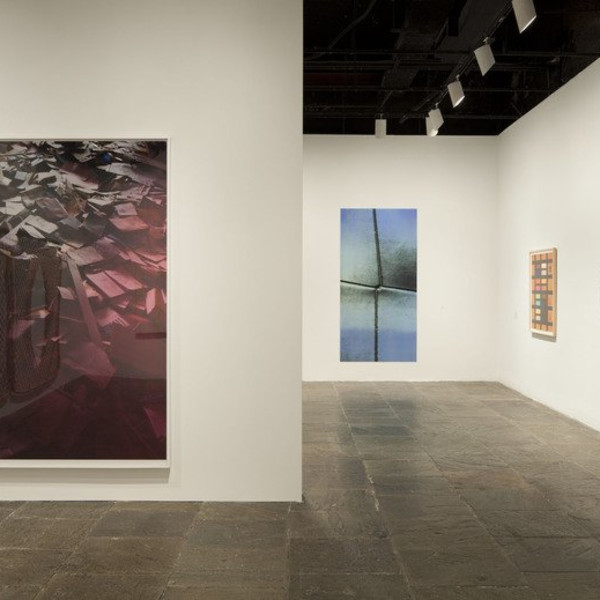
Walead Beshty: Test Pattern at the Whitney Museum of American Art, New York
A selection of recent acquisitions from the Museum’s permanent collection, Test Patternbrings together works, made mostly in the last three years, that demonstrate artists’ shared interests in investigating the entangled roles of materiality, reproduction and process. Perhaps in response to the increasingly seamless exchanges of visual information in the digital age, the artists featured in this exhibition seem intent on complicating and obscuring content, encouraging slower and more nuanced ways of looking. The phrase “test pattern,” a graphic tool that enables the synchronization of signals for optimum color and clarity, suggests a metaphor for the way these artists question the legibility of images at a moment where technology has amplified the impact of images and accelerated their transmission. Including works by Michele Abeles, Tauba Auerbach, Mathew Cerletty, Leslie Hewitt, Meredyth Sparks, Kaari Upson and others, the exhibition demonstrates the Museum’s continued commitment to collecting work by younger and emerging artists.
Test Pattern is organized by Laura Phipps, Senior Curatorial Assistant and Nicholas Robbins, Curatorial Assistant.
-
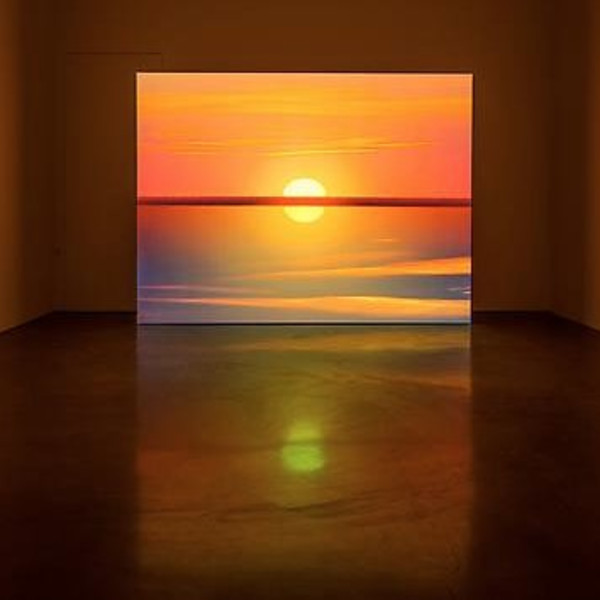
Paul Pfeiffer and Akram Zaatari: Group Exhibition, Regen Projects,
Regen Projects is pleased to present a group exhibition of video works by John Bock, Keren Cytter, Paul Pfeiffer, Gillian Wearing, and Akram Zaatari. This presentation marks the first time many of these works will be shown in Los Angeles.
John Bock’s Dandy (2006) was filmed at the family home of Henri de Toulouse Lautrec, the Chateau du Bosc. The video stars Monsieur Lautréamont, a character akin to Lautrec, who is willing to transgress traditional taste in the pursuit of aesthetic perfection. It is both period drama and surreal fantasy, featuring the artist as actor, and sculptural props resembling Bock’s work outside of the moving-image medium. Bock was recently included in The Encyclopedic Palace at the 55th Venice Biennale, and will have a major solo exhibition at the Bundeskunsthalle in Bonn, Germany (October 3 – January 12, 2014).
For Untitled (2009), artist Keren Cytter used both trained and untrained actors to shoot in front of a live audience at the Hebbel am Ufer theater in Berlin. Inspired by John Cassavetes’s Opening Night (1977), the film follows a theater actress as she prepares to go on stage and is confronted by the constructed nature of identity and reality. Her backstage ‘monologue’ resonates with the nature of role-playing and the performance awaited by the audience on the screen. Untitled was
last shown in Los Angeles during a one-person exhibition of Cytter’s work at the Hammer Museum in 2010. In addition to making video-based works, Cytter has published numerous novels, screenplays, journals and poems, and is the founder of the dance and theater company Dance International Europe Now (D.I.E. NOW).
Paul Pfeiffer’s Morning After the Deluge (2003) uses digital technology to create an illusion combining sunrise and sunset into a hypnotic projected image. The work takes its title from J. M. W. Turner’s painting from 1843, Light and Colour (Goethe’s Theory) – the Morning after the Deluge – Moses Writing the Book of Genesis, which depicts the dawn following the devastation of the biblical event. Both atmospheric and contemplative, Pfeiffer’s film is a rumination on the passing of time while suspending it indefinitely. Pfeifferis the recipient of numerous awards and prizes including the Bucksbaum Award given by the Whitney Museum of American Art (2000) as well as the Alpert Award for Visual Arts (2009). His work has been the subject of recent solo exhibitions at the Albright-Knox Gallery, Buffalo, New York in 2010 and the Blanton Museum of
Art, Austin, Texas in 2012.
The brief but powerful Bully (2010) by Gillian Wearing features Method actors engaging in an improvisational exercise in which an incident from the protagonist’s personal experience is reenacted. As the participants taunt and belittle the victim, painful memories emerge and emotions arise, blurring fact and fiction as roles and motivations become less clearly defined.
Bully was cut from the 83-minute documentary feature Self Made (2010), which was funded by the UK Film Council, and will be presented for the first time in Los Angeles. Wearing recently had a retrospective organized by the Whitechapel Gallery, London, which traveled to K20, Kunstsammlung Nordrhein-Westfalen, Düsseldorf, Germany and Pinakothek der Moderne, Munich, Germany and will have a solo exhibition at Regen Projects in the fall of 2014.
Akram Zaatari’s The End of Time (2013) depicts a changing combination of two men enacting a cycle of seduction and indifference. Zaatari’s work explores aspects of representation, identity, intimacy, and desire and is informed by research on vernacular Middle Eastern photography and the functions of the archive. One of the founders of the Arab Image Foundation, which aims to locate and preserve photos from Arabic communities around the world, Zaatari’s work investigates how images and image-making affect notions of history and memory. Akram Zaatari represented Lebanon this year at the 55th Venice Biennale with Letter to a Refusing Pilot (2013) and is currently premiering in the United States two video installations at the Museum of Modern Art in New York.
-
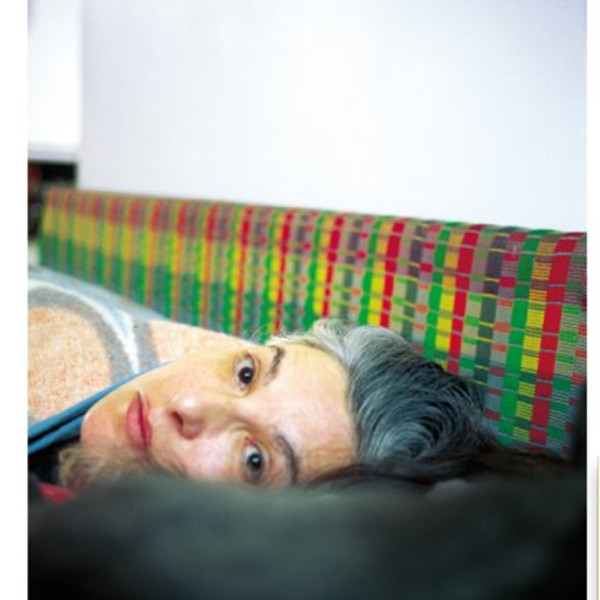
Jean-Luc Moulène: Works, Beirut Art Center
Beirut Art Center is pleased to present a solo exhibition by French artist Jean-Luc Moulène.
Known as a photographer, particularly for his series Objets de grève (2000-2003) and Produits de Palestine (2002-2004), Moulène's documentary approach to photography has participated in questioning the function of the image and its politics, as well as the relations between the photographer, the subject, and the spectator. Since the late 1990s Moulène has become more and more engaged in the production of objects and drawings, reacting to the increasing dematerialization of labour. That being said, there is no definite boundary between image and object, and the artist continues to use photography as a research tool.
This exhibition is Moulène's first solo show in Lebanon; yet, his experiences in the country started more than a decade ago. Moulène travelled to Lebanon in 1999 and 2002, producing a body of images in the city of Saida. This photographic series consists of landscapes, as well as portraits of individuals whom the artist met and got to know during his stay in the city. These images were printed in large format (2 x3 m) and hung on the walls of the old city, evoking the complex relations between private and public space, and allowing the residents to appropriate these images in a gesture of restitution.
For this exhibition the artist will present works in different media, ranging from photographs, drawings with BIC ballpoint inks, objects, video, as well as a large scale structure especially produced for the show. While this exhibition is not a retrospective of Moulène's oeuvre, it nonetheless includes many key works that he created at different stages of his career. The exhibition unfolds in four parts. The first presents works that share a concern with the body in relation to personal and public space. The second leads us to think about production means and processes focusing on the notion of "standard." The objects included in the third part are carefully handmade and put in dialogue with photographs considered by the artist as "documents." Finally the exhibition ends with a series of drawings and a video that make use of observations and performative gestures to rethinking the mundane.
Stemming from the 1970s' notion of art as an enigma, Moulène's approach is disjunctive, dismissing clearly defined ideas and addressing multiple themes. In these exhibited works the artist confronts the viewer with the standard and the singular, as well as the performative aspect of identity formation. Moulène's concern is also "to authorize rather than to be an author," to show tensions and conflicts, affirmations and negations in the systems that govern our lives from economy to culture. The artist can be said to produce tricks for truth, or artefacts and spaces for the sake of experimentation with options and choices. In this sense, many of his works are conjugated in the future tense, pointing to a possibility, a potential for subversion that may or may not be realized.
Page
71
of 75
